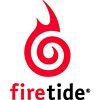
CSU Monterey Bay and Firetide Announced a Research Collaboration
 Firetide, Inc., a provider of high-performance, wireless, infrastructure, mesh networks, today announced that they have partnered with California State University, Monterey Bay (CSUMB) to deploy an outdoor, mesh-infrastructure, testing environment to conduct research on the performance of various Firetide solutions. This project will utilize students and faculty of the university’s Computer Science and Information Technology (CSIT) department, working in collaboration with Firetide’s engineering team to conduct a variety of experiments on their mesh products.
Firetide, Inc., a provider of high-performance, wireless, infrastructure, mesh networks, today announced that they have partnered with California State University, Monterey Bay (CSUMB) to deploy an outdoor, mesh-infrastructure, testing environment to conduct research on the performance of various Firetide solutions. This project will utilize students and faculty of the university’s Computer Science and Information Technology (CSIT) department, working in collaboration with Firetide’s engineering team to conduct a variety of experiments on their mesh products.
Throughout their education at CSUMB, students gain a strong grounding in fundamentals with many opportunities to apply what they have learned in real-world situations through class projects and a senior year capstone. The capstone program requires each student to complete a significant project for an external client, during their senior year. This provides students with professional-level, hands-on, work experience while the clients benefit from the students’ research and contributions to the projects.
“Every capstone project is focused on bringing the community and CSUMB students together to work toward a common goal,” said Dr. Sathya Narayanan, director of CSUMB’s computer science and information technology program. “The ability to work directly with local industry, especially leading-edge companies like Firetide that are located in the heart of Silicon Valley, not only provides our students with relevant, hands-on experience, but also access to some of the best technologies and brightest thought leaders in the industry.”
The university’s CSIT course curriculum and required capstone project provides students with a unique blend of theory, hands-on experience, and real-world application that make this program ideal for students interested in pursuing careers in computer science and information technology. Working in conjunction with Los Gatos, CA-based Firetide, senior-class students of the CSIT program have direct access to a fully-functional, Firetide wireless infrastructure mesh network they can use to complete their capstone projects. Students will conduct research on the Firetide wireless mesh network to run experiments on a variety of voice, video and data mobility applications in vehicles moving at different speeds. The students also get to work with Firetide’s engineering team, who provide them with ongoing, expert guidance and training.
“Here we are, in our senior year of undergrad, not only reading textbooks and doing simulations in the classroom lab. We are out in the field, working with state-of-the art equipment, interacting with experienced engineers. This is an invaluable opportunity, and we’re very excited about it,” said Vishaal Sharma and Jason Zandona, computer science and information technology students.
Firetide’s wireless mobility test track is located along the side of a 1½ mile stretch of public road located on CSUMB land. The network is comprised of Firetide’s high-performance HotPort 7020 wireless mesh nodes that are mounted on street-light poles, 50 feet above the ground; FMC 2000 mobility controller; and HotView Pro network management software that provides centralized management and control of the wireless mesh nodes.
“This is not your typical university lab setting that has multiple students working in classrooms with outdated technologies they may never use again,” said Duane Zitzner, chief executive officer of Firetide. “The network at CSUMB presents students with a unique opportunity to work with new, state-of-the-art, outdoor, wireless mesh infrastructure networks that have been successfully deployed for mission-critical public safety, emergency response and transportation mobility applications across the globe.”